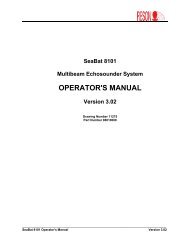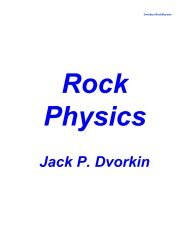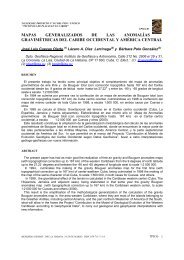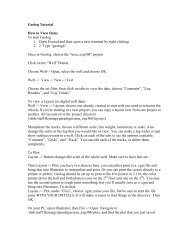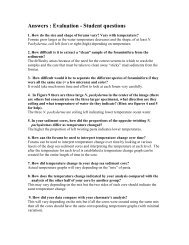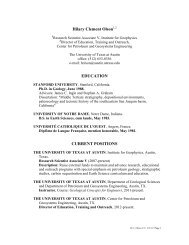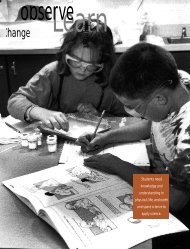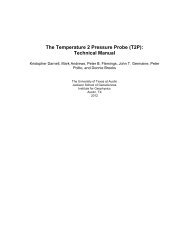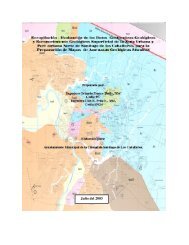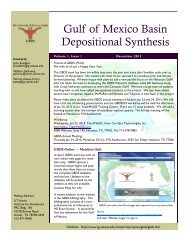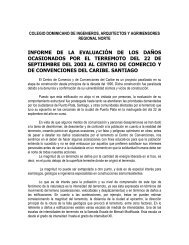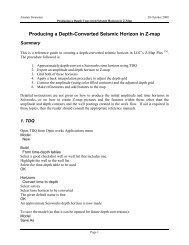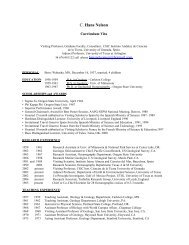IGCP Project short title: Caribbean Plate Tectonics Duration and ...
IGCP Project short title: Caribbean Plate Tectonics Duration and ...
IGCP Project short title: Caribbean Plate Tectonics Duration and ...
Create successful ePaper yourself
Turn your PDF publications into a flip-book with our unique Google optimized e-Paper software.
6.2 SCIENTIFIC MEETINGS AND WORKSHOP REPORTS<br />
15<br />
GENERAL SYMPOSIUM 17-6. CARIBBEAN PLATE TECTONICS, ORIGIN AND<br />
EVOLUTION. 31 INTERNATIONAL GEOLOGICAL CONGRESS, RÍO DE JANEIRO<br />
August 6 to 17, 2000<br />
Conveners: Manuel A. Iturralde-Vinent <strong>and</strong> Edward G. Lidiak<br />
This symposium was dedicated to analyzing the present status of <strong>Caribbean</strong> <strong>Plate</strong><br />
Tectonic models. Four special oral presentations <strong>and</strong> 12 posters were the subject of<br />
interesting debates <strong>and</strong> active exchange of data <strong>and</strong> interpretations.<br />
The oral session, attended by more than 50 persons, was celebrated the morning of<br />
August 7th. Four special speakers presented their respective viewpoints concerning how they<br />
underst<strong>and</strong> the formation <strong>and</strong> evolution of the <strong>Caribbean</strong>, but the fact is that each one<br />
produced a quite distinct scenario. In this regard, it is important to quote the senior convener,<br />
in the fact that "The <strong>Caribbean</strong> is a singular area of planet Earth, <strong>and</strong> therefore, it had had a<br />
single history". The plate tectonic models that explain the <strong>Caribbean</strong> plate as an<br />
allochthonous crust originated within the Pacific Ocean, was very well exemplified by the<br />
model of J. Pindell <strong>and</strong> L. Kennan. The special speaker Martin Meschede reviewed some<br />
<strong>short</strong>comings of recent Pindell's <strong>and</strong> Paul Mann's models, <strong>and</strong> presented his arguments for an<br />
in situ origin of the <strong>Caribbean</strong> plate. Another version of the in situ model was presented by<br />
Giuseppe Giunta (visit Comparison at Carib<strong>Plate</strong> Web Site). M. Iturralde-Vinent, as special<br />
speaker, evaluated the few similarities <strong>and</strong> many contradictions that exist among modern<br />
<strong>Caribbean</strong> <strong>Plate</strong> Tectonic models (visit Forum at Carib<strong>Plate</strong> Web Site). The in situ models<br />
were criticized because they have a problem of space in explaining the Cretaceous <strong>and</strong> early<br />
Tertiary Greater Antilles-Aves Ridge-<strong>Caribbean</strong> mountains subduction-related volcanic arcs.<br />
Some questions were also raised concerning the polarity of these arcs <strong>and</strong> the original<br />
position of some terranes of the <strong>Caribbean</strong> margins, subjects that will require more careful<br />
attention in the future.<br />
Twelve papers were presented at the Poster Session which was held in the afternoon<br />
on both August 7th <strong>and</strong> 8th. They included three of the special oral presentations as well as<br />
new results from field research in key areas of Cuba, Puerto Rico, Venezuela, <strong>and</strong> Costa<br />
Rica. This session produced an active exchange of viewpoints among presenting authors, but<br />
also with many interested congress members.<br />
The conveners <strong>and</strong> participants agreed that the symposium was an excellent forum<br />
for the most valuable exchange of ideas, but as exciting was the possibility to meet people<br />
based in different areas of the world with personal expertise <strong>and</strong> strong interest in the<br />
<strong>Caribbean</strong>. In terms of the scientific impact of the symposium, we concluded that despite the<br />
great amount of valuable information available about the <strong>Caribbean</strong> submarine <strong>and</strong> l<strong>and</strong><br />
15



